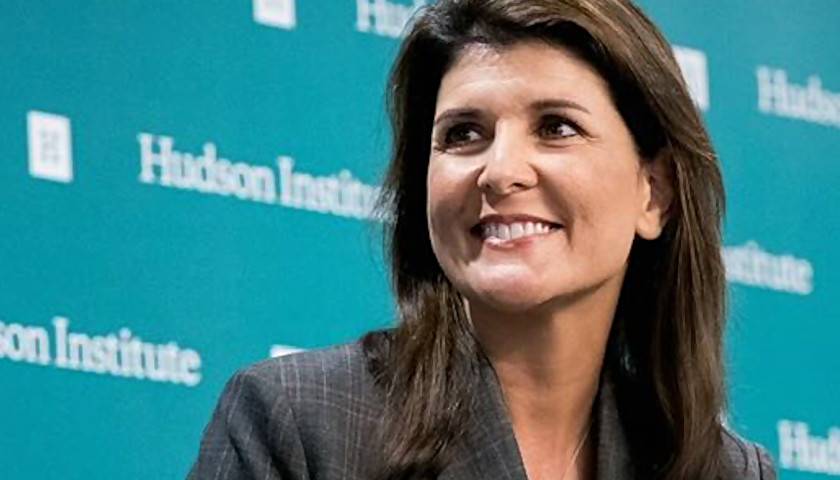by Vince Bielski
A vote by the Los Angeles board of education vote last month to ban charter schools from sharing space at 300 district campuses is the latest big-city attack against alternatives to struggling traditional public schools.
With the strong support of United Teachers Los Angeles, school board members say the ban will protect black and Latino students from the disruption and harm that occurs when charters are placed in buildings used by other public schools. But charter advocates reject the board’s reasoning. Far from hurting disadvantaged students, charters in LA and other cities have established an outstanding track record in accelerating their academic performance compared with traditional schools, according to researchers.
Behind the battle in Los Angeles is a fierce competition for students and the funding that accompanies them. Urban districts are continuing to lose enrollment as families leave cities for the suburbs or other states – a broad trend that also effects charter enrollment, to a lesser degree. As more charters earn a reputation for excellence, particularly in major cities, they have become one of the favorite destinations for exiles from traditional schools.
The threat posed by charters – privately run schools that aim to bring innovation to public education – helps explain why districts and teachers unions are putting more obstacles in their path to expansion. In Los Angeles, the ban on co-locations has long been on the agenda of the teachers union and could affect 11,000 students at charters that share a campus, says Myrna Castrejon, president of the California Charter Schools Association (CCSA), which hasn’t ruled out a lawsuit against the district.
“It is supposed to be a shared resource,” Castrejon says. “But there’s constant pressure locally to divide the community, as in these buildings are for district students and not for charter students.”
President Biden, a staunch ally of unions, has emboldened charter opponents. Each year the administration has declined to push for an increase in the $440 million Charter School Programs, which provides vital federal funding for facilities so charters can expand. It also attempted to restrict access to the money, sparking a fight with charter advocates.
Biden’s cold shoulder marks a departure from the support of every president going back to Bill Clinton, says Michael Petrilli, president of the Thomas B. Fordham Institute, which advocates for more ambitious standards in public education. “The Biden administration has been hostile to charter schools,” Petrilli says. “Unions have so much power over the Democratic Party and that’s making it more difficult.”
While charter expansion has ground to a halt in many urban centers where the movement first took root, a new frontier of growth has emerged. In southern and western states, charters are chalking up big enrollment gains as city dwellers flock to these areas.
All told, charter enrollment likely grew in the 2022-23 school year, continuing a pattern of incremental expansion, according to an estimate by the National Alliance for Public Charter Schools (NAPCS), which plans to release enrollment data for last year in November. In the prior three years during the pandemic, enrollment jumped 7% to about 3.7 million students while district public schools lost 3.5% of students.
Surpassing Traditional Public Schools
In vying for students, urban charters have one hard-earned advantage over traditional schools: academic achievement.
Stanford’s Center for Research on Education Outcomes (CREDO) has been tracking charter performance for 15 years in the biggest ongoing study of its kind. After the initial CREDO report in 2009 found that charters on average underperformed traditional schools, suggesting they were a failing experiment in innovation, a second evaluation in 2013 showed improvement.
In June, the most recent assessment of charters, which included schools in 31 states, grabbed the attention of educators. It revealed for the first time that students in charters on average have been advancing in reading and math faster than their peers in traditional schools. Charter students got the equivalent of 16 more days of learning in English and six additional days in math in a school year from 2015 to 2019.
The breakdown by school was mixed: 36% had more academic growth than traditional schools, but some charters struggled, with 17% underperforming.
The study has come under attack. The National Education Policy Center accused CREDO of overstating the significance of the findings. The center said the positive results were too small to be meaningful and that policymakers should view them with skepticism.
James L. Woodworth, a CREDO co-author, told RCI that the math result was a very small gain, but the finding for English showed “a pretty big effect” that can make a difference in how much students learn.
“The critics are trying to dull the impact of the results because of their political stance,” Woodworth says. “On the other side, advocates are playing up the results, saying all charters are wonderful. That’s not true either.”
While online charters have been a bust, and rural ones produced mixed results, urban schools were the success story in the study. These charters, which are filled with black and Latino students, gained almost 30 extra days of learning in both English and math, a significant advancement.
What’s more, the best of them have been cracking the toughest nut in public education: the achievement gap. In almost 1,400 charters where performance exceeded state averages, low-income students had academic growth that was as strong or stronger than wealthier students, partly closing the historically wide span between them.
“Identifying schools that are closing this gap is really important because it shows we can do this,” Woodworth says. “For charter operators with this kind of proven success, you want to find a plan for them to grow.”
Urban Charters Under Attack
But in many cities, top performing charters serving low-income students face mounting opposition.
In Chicago, at least four charter networks, such as Noble Schools, have proven to be “gap busters,” according to the CREDO study. More than a decade ago, Noble Schools grew along with other Chicago charters at a rapid pace of about 10 new school openings a year, gaining the broad support of local Democrats, says Andrew Broy, the president of the Illinois Network of Charter Schools.
But then charters ran into a formidable opponent – the Chicago Teachers Union. Before the pandemic, as traditional schools began steadily losing students, the union called for a halt to new charters. The union later won a provision in its contract that adds pressure on the district to curb charter growth.
Still, Broy’s group has pushed to place top-performing charters in areas, such as southwest Chicago, which suffer from overcrowding and a lack of good schools for black and Latino students. But approvals by the board of education have slowed to a trickle, with about three openings during the last three years.
“The union has been a relatively powerful voice for slowing and even stopping our growth,” Broy says. “It certainly influenced the political climate, which is now much more skeptical about charter enrollment.”
The Chicago Teachers Union did not respond to a request for comment.
In Los Angeles, the fight between the teachers union and charters has centered on a scarce resource: school buildings.
In California, Proposition 39 was a victory for charters two decades ago, requiring school districts to provide space for them. The California Charter School Association had to sue the district twice to implement the new law, and charters took off, peaking at 117 openings statewide in 2016.
Low-income students in particular have benefited in more than 30 charter networks that are closing the performance gap. A third of these networks are in LA.
But school districts in LA and elsewhere have also used the law in bad faith to put a drag on charter growth, says Ricardo Soto, the charter association’s general counsel. Districts often offer new charters two or more small spaces miles apart rather than a single building to accommodate all students, a costly option that requires more staff and one that some charters must turn down.
Last month, charters suffered two more setbacks. In addition to the co-location ban in LA, California lawmakers passed a bill that will make it more expensive for charters to finance the construction of their own buildings.
The bill, co-sponsored by the California School Employees Association, gives school districts the right of first refusal to buy charter buildings in the event of a sale, adding possible delays to a deal and thus driving up interest rates on the bond financing for their construction.
“This is absolutely a hit job proposed by folks who are very anti-charter,” says the charter association’s Castrejon.
But Gov. Gavin Newsom vetoed the bill on Oct. 7, citing the risk of higher facility costs to charters. The California School Employees Association did not respond to questions about the bill.
When Charters Fail
Critics point out that the recent gains by charter schools do not negate the other side of the story: A high percentage of them fail, due to poor performance, too few students, and negligent oversight.
One study in 2020 found an “alarmingly high” charter failure rate of 50% by their 15th year of operation. Cities like Detroit and Milwaukee with high rates of poverty have been hit the hardest. The closures from 1999 to 2017 displaced almost 900,000 students, disrupting their education.
Helen Ladd of Duke University, who has studied the fiscal impact of charters, says school failures also create havoc within districts. “Traditional schools must find space for the students,” Ladd says. “It makes planning very difficult. How many first graders will there be? Schools don’t know year to year.”
Charter advocates note the double standard at play here. The possibility of closure is part of the startup agreement a charter makes with its overseer, such as a district or nonprofit group, to keep it accountable to its promise of innovation. By comparison, poorly run traditional schools are rarely shut down, with the exceptions of Chicago and New York City when they were under the control of centrist mayors, due to union and community pressure.
Charter proponents admit that oversight has been a serious problem. But supervision is improving, from the vetting of applicants who want to start a school and the standards that they must meet to the authority of their overseers to shut them when problems arise, says Todd Ziebarth, who leads NAPCS’s work to improve state laws.
“There’s been a lot of progress in creating better laws and policies to hold schools accountable in Iowa, Montana and Wyoming, to name a few states,” Ziebarth says. “But we need to see more progress on implementing these policies.”
Turnaround in Ohio
The charter turnaround in Ohio is an example of the progress. As enrollment grew rapidly for 15 years to 121,000 students, so did evidence of low performance, student neglect, and inflated attendance records.
The overseers – school districts and education service providers – did a poor job evaluating and sanctioning charters, partly because of a conflict of interest that incentivized them to keep bad schools open. They received revenue for providing supervision based on enrollment, so closing a school meant less funding for them, says Chad Aldis, who leads Ohio policymaking for the Fordham Institute, which oversees some charters in the state.
Ohio lawmakers cracked down in 2015, giving the state education department power to hold overseers accountable for closing schools. As a result, more than 100 charters shut down and most of the supervisors left the system in the shakeout. A few years later, the performance of the remaining schools began to rise, Aldis says.
This year, with renewed faith in charters in Ohio, enrollment is expected to grow to about 125,000 as 10 new schools open. In June, lawmakers approved a significant increase in funding for low-income students attending high-performing charters, giving them about 90% of the per-pupil money at traditional schools.
At the United Schools Network in Columbus, more money allowed it to increase teacher salaries to $49,000, fill open positions, and prepare for more students, says Andy Boy, United’s CEO.
As city schools in Columbus continue to shrink, United’s four charters serving mostly black and Latino students are poised to expand enrollment by a third to 1,200 in the next few years, Boy says. It’s not hard to understand why.
“We outperform Columbus schools with similar demographics in virtually every metric, from attendance to academic growth to proficiency,” he says. “And virtually all of our students come from city schools.”
United’s formula – high expectations and lots of rules and consequences for breaking them – is commonplace in inner-city charters. The first three days of school each year are culture camp, where students are told what’s expected of them: Sit up in class, pay attention to the teacher, avoid disruptive chatter, stand in straight lines, and so on.
As a result, Boy says, his classrooms are calm and conducive to learning. He can count on two hands the number of fights at United’s schools over a dozen years. By comparison, a nearby public school had 250 acts of violence in one year, creating a culture of chaos.
Progressive educators say charters like United are not a solution to the problems of urban education. They say the strict rules of behavior snuff out independent thinking, and worse, reinforce a racial hierarchy of control over students of color.
“To say this is racist is ridiculous,” says Boy, who is white. “What’s racist is kids going to school and not learning. There is no social justice without learning.”
De’Lona Moultrie, a business consultant, sent her three boys to United after seeing disturbing behavioral issues at the local public middle school. Moultrie says United offered a rigorous curriculum that she and her husband value, and her sons received a high-quality middle-school education. Two of them later graduated from Georgetown University.
“I loved the strict rules,” says Moultrie. “My sons said that things still happened, no school is perfect, but kids weren’t fighting everyday like at the other school.”
Grinding Out Charter Growth
The biggest growth for charters is expected to come in Republican-controlled and swing states, spurred by funding increases. While Texas, Florida, Pennsylvania, and Arizona added a combined 107,000 charter students from 2019 to 2022, many smaller states had big percentage gains. Oklahoma saw a 30% increase. South Carolina added 25%.
In Texas, the promise of charter innovation seems to be paying off. Schools offering a rigorous classical “great books” curriculum, focusing on fundamental principles and character development, are the fastest growing charters in the state, with enrollment jumping about sevenfold over the last decade, according to a study by Albert Cheng at the University of Arkansas.
In Arizona, former teacher Diana Diaz-Harrison started a charter to fix a well-known problem at traditional schools – a lack of specialized services for children like her son who’s autistic. Since opening in 2014, Arizona Autism Charter Schools has steadily expanded, opening its fifth school this year to meet the growing demand from families. Diaz-Harrison says three more schools are in the works.
Like charters in other states, the autism schools are growing for one reason – they are doing a better job than the nearby traditional school.
“Our projections are for slow growth due to population shifts away from cities and also states like Arkansas and Idaho where we haven’t seen a lot of growth in the past,” says Nina Rees, NAPCS’s president. “New people are coming in and opening schools.”
– – –
Vince Bielski is a writer for RealClearInvestigations.
Photo “Teacher” by Alliance for Excellent Education. CC BY-NC 2.0.






